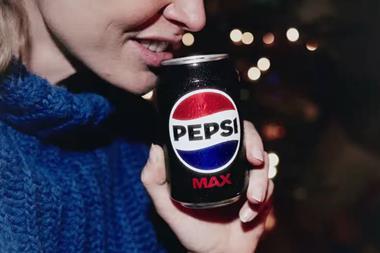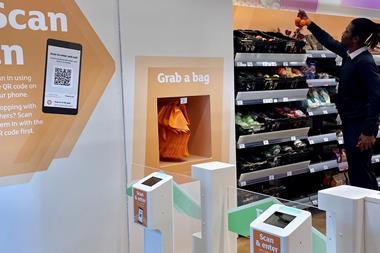Advertising executives used to regard shopper marketing as the dirty end of the industry, the ugly sister to more glamorous TV work. Point of purchase or PoP was left to sales promotion agencies, which crammed the aisles with price-led cardboard ads.
But now, the ad execs are paying closer attention. Global advertising agencies such as Ogilvy and Saatchi & Saatchi have launched dedicated shopper marketing divisions in a bid to scoop up growing budgets as retailers and manufacturers demand more sophistication from their in-store marketing. The sector is booming and The Grocery Manufacturers Association is predicting revenues spent on shopper marketing will grow 21% in 2010.
“The discipline has been building for a couple of years, but the recession has brought a greater need to show the consumer there are more reasons to buy than just price,” says Rachelle Headland, business development director at Pulse Group. “More people are staying in rather than going out, so brands want to show how they can enhance home life.”
So how has the discipline remodelled itself to convince thrifty shoppers to look for something other than just value? Well, it’s all in the mind.
Technology has enabled retailers, manufacturers and advertisers to focus on the consumer’s thinking and experience. Now, the customer’s entire shopping journey is under scrutiny even from before they enter the shop. “We have so much more data from loyalty schemes and new research techniques such as eye-tracking than we did five years ago,” says Headland. “We can now see exactly what is happening in store and take this insight to retailers.”
Research company Spring has seen demand for shopper-based research soar recently. “Clients are realising that it’s not a case of just chucking a price message in store. You also need to get a brand message across,” says MD Stephen Phillips. “There is a realisation that retailers and brands lack sufficient understanding of what consumers go through in the final stages of their buying journey. It’s much more complicated than people once thought.”
Manufacturers are rising to the challenge. Diageo has created two new shopper marketing manager roles based at its London headquarters and cosmetics outfit Beiersdorf has rejigged its marketing department. Retailers have also been busy. “We have done eyetracker research that has provided really interesting results about the number of seconds PoS is looked at and how some high-level signs can be missed completely,” says Sainsbury’s marketing services manager Natalie Dunn.
Spar’s head of marketing support Adam Margolin says his strategy is to build a communications message as the shopper moves through the store. A key way of doing this is to use ‘adjacencies’, a strategy Ogilvy Action often employs to market Coca-Cola lines in-store, according to head of shopper marketing Orit Peleg.
At Christmas, Coke was placed next to festive foods with tips for hosting the perfect Christmas provided either on-pack or on nearby leaflets. The thinking was that this would appeal to mothers and create an emotional reason for purchase that is stronger than price.
Saatchi & Saatchi’s shopper marketing division Saatchi X pushed similar emotional buttons when it partnered client brand Pampers with charity Unicef four years ago. For every pack purchased, Pampers pledged to fund a vaccine for a child to be immunised against tetanus. As well as winning over consumers, the campaign has caught retailers’ imaginations, with many pledging to donate to the charity if customers buy Pampers.
While tie-ins are a proven tactic, brand owners can still find shopper marketing campaigns stifled by retailers’ stringent control of the shopping environment. Retailers want to own every part of the shopper’s journey and brands have to work hard to get the green light for any marketing activity of their own.
“This has changed consumers’ relationship with brands completely,” says Saatchi & Saatchi X EMEA/UK chief executive Simon Hathaway. “The irony is that most stores adopted a clean store policy but then filled the aisles with their own price-led clutter.”
Brands must find “cunning ways to get their power back”, he says. The key is to encourage shoppers to “participate” with the brand, he suggests. This could be through traditional advertising and shopper marketing tactics as Diageo demonstrated last summer with its campaign associating its Pimm’s brand with informal get-togethers and ‘fun in the great British outdoors’. Or, as is increasingly the case, it could be through interactive shopper marketing using digital technology.
This type of marketing is still in its infancy and arguably better established in the US Hathaway cites the example of Kraft, which recently created a smartphone application to help shoppers plan a menu while they trawl the supermarket aisles but it is gaining increasing traction in the UK and Hathaway believes it is just a matter of time before QR codes (which can be scanned with a smartphone, providing instant information) and digital coupons are central to the way brands communicate with consumers.
Ogilvy’s Peleg is already talking to clients about how to weave social networking into in-store communications. “The demand for real reviews and real people’s voices is a real trend,” she says. “If I were advising a challenger brand in grocery, I would recommend including a QR code that shoppers can click on to instantly read a review of the product.”
It’s all about giving the shopper a sense of empowerment, she says. Digital technology isn’t the only way to do this, of course, but it will play an increasingly important role as will the ability to communicate on an emotional level with shoppers.
Paradoxically, price may well be the least powerful weapon in the shopper marketing arsenal to grab their attention.
Sign in to comment on this article
Not logged in before? Register for FREE guest access today.
You will be able to:
- Read more stories
- Receive daily newsletters
- Comment on stories
Advert


















No comments yet